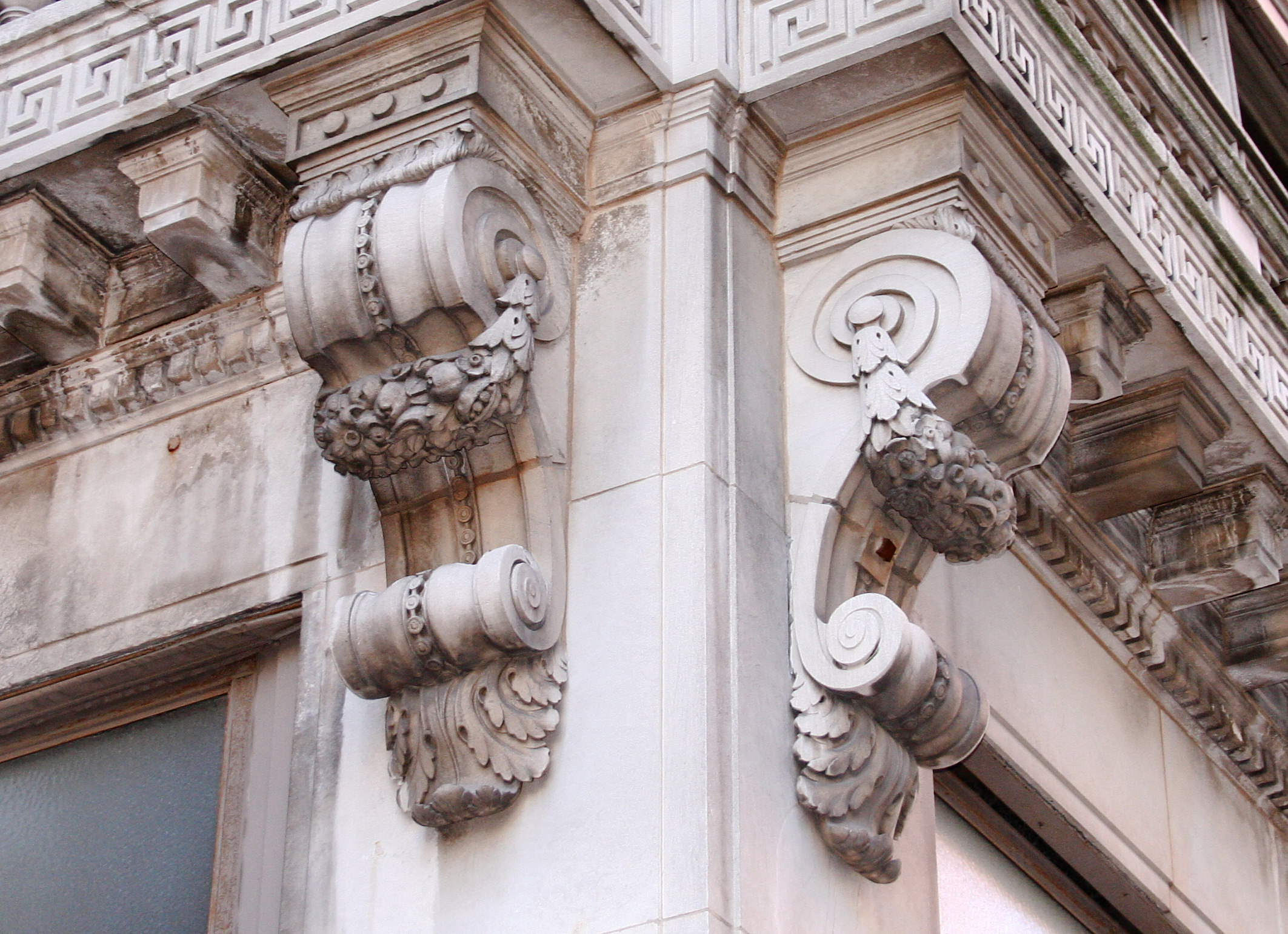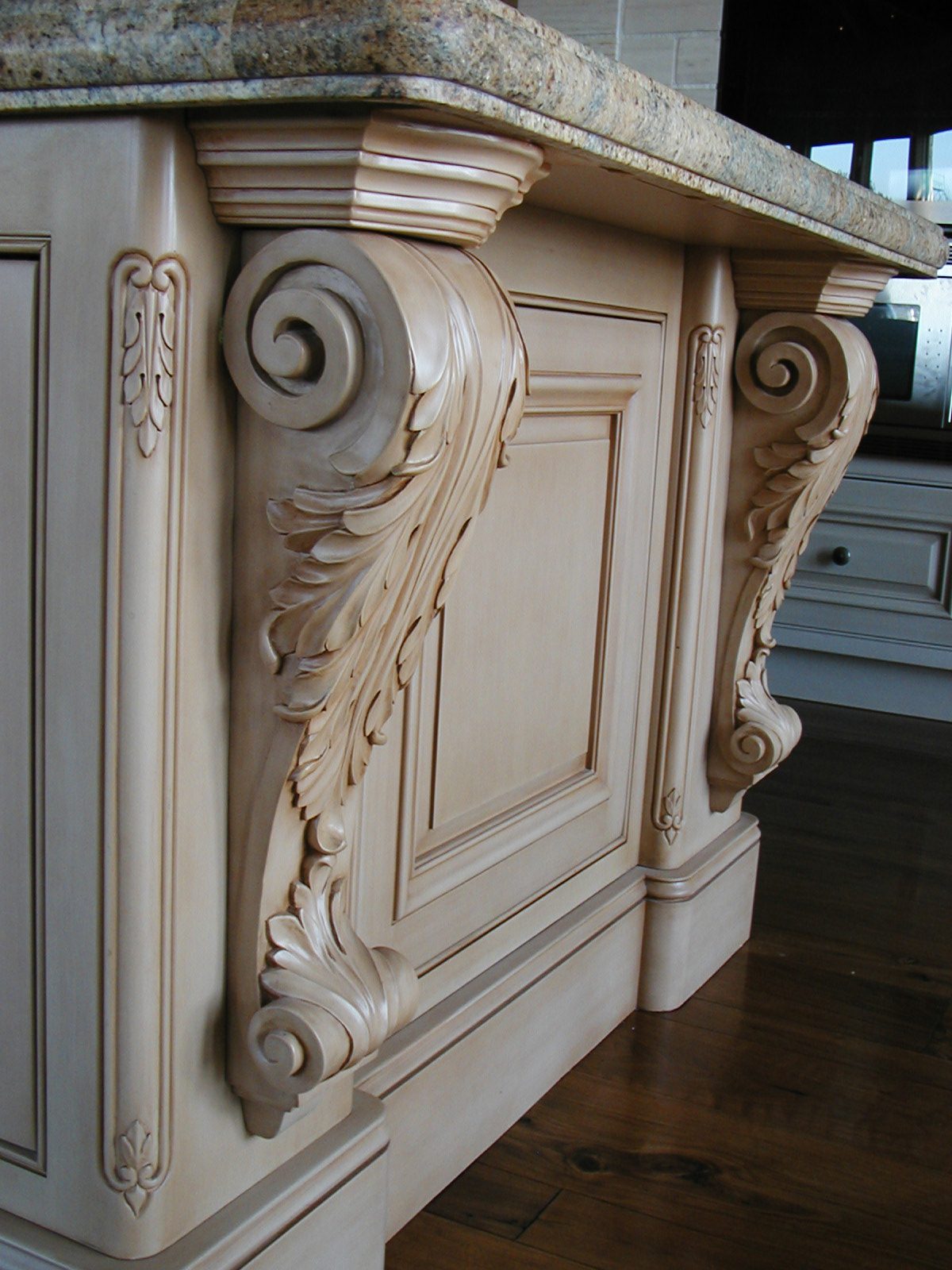Corbel
The term ‘corbel’ refers to an architectural member that projects out from a wall and acts as a type of bracket to carry weight, such as that imposed by a balcony above. Corbels are built into walls to a depth that allows the pressure on the embedded portion to counteract the load on the exposed portion. Traditionally, they are made of stone, timber or metal.
The technique of corbelling has been used since Neolithic times and is common in Medieval, classical, gothic, Chinese and Hindu architecture. Traditionally, corbels were often elaborately carved and decorated.
Consoles are similar, S-shaped structural members in which the upper part is larger than the lower. These are applied to the structure as a separate element as opposed to being built in as part of the continuous masonry course.
The technique is also used for corbel arches, which consist of two opposing sets of overlapping corbels meeting at a peak. In this way they resemble inverted staircases. When these arches are used in a series they are known as a corbel vault. Both corbel arches and vaults were common elements of Babylonian and Mayan architecture, where curved structures were yet to be developed.
[edit] Related articles on Designing Buildings Wiki
Featured articles and news
Homes England supports Greencore Homes
42 new build affordable sustainable homes in Oxfordshire.
Zero carbon social housing: unlocking brownfield potential
Seven ZEDpod strategies for brownfield housing success.
CIOB report; a blueprint for SDGs and the built environment
Pairing the Sustainable Development Goals with projects.
Types, tests, standards and fires relating to external cladding
Brief descriptions with an extensive list of fires for review.
Latest Build UK Building Safety Regime explainer published
Key elements in one short, now updated document.
UKGBC launch the UK Climate Resilience Roadmap
First guidance of its kind on direct climate impacts for the built environment and how it can adapt.
CLC Health, Safety and Wellbeing Strategy 2025
Launched by the Minister for Industry to look at fatalities on site, improving mental health and other issues.
One of the most impressive Victorian architects. Book review.
Common Assessment Standard now with building safety
New CAS update now includes mandatory building safety questions.
RTPI leader to become new CIOB Chief Executive Officer
Dr Victoria Hills MRTPI, FICE to take over after Caroline Gumble’s departure.
Social and affordable housing, a long term plan for delivery
The “Delivering a Decade of Renewal for Social and Affordable Housing” strategy sets out future path.
A change to adoptive architecture
Effects of global weather warming on architectural detailing, material choice and human interaction.
The proposed publicly owned and backed subsidiary of Homes England, to facilitate new homes.
How big is the problem and what can we do to mitigate the effects?
Overheating guidance and tools for building designers
A number of cool guides to help with the heat.
The UK's Modern Industrial Strategy: A 10 year plan
Previous consultation criticism, current key elements and general support with some persisting reservations.
Building Safety Regulator reforms
New roles, new staff and a new fast track service pave the way for a single construction regulator.
























